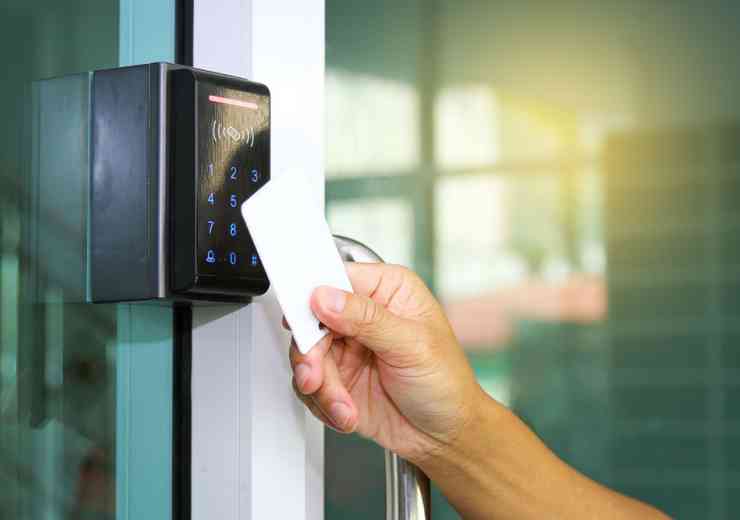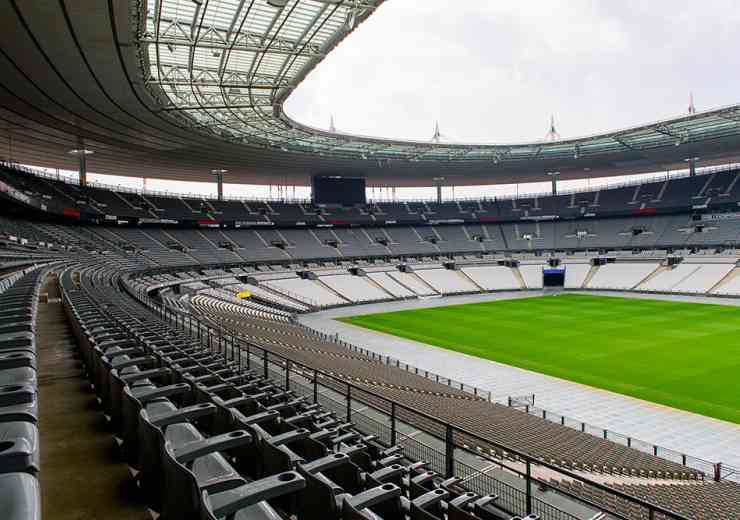Striking security balance with stadium crowds
 In 2012 the BBC’s investigative journalism programme, Panorama, aired a documentary highlighting pervasive violence, racism and anti‑semitism in football stadiums prior to the UEFA European Football Championship. While this program focused on Eastern Europe, violent and racist hooliganism is unfortunately not a new phenomenon within football.
In 2012 the BBC’s investigative journalism programme, Panorama, aired a documentary highlighting pervasive violence, racism and anti‑semitism in football stadiums prior to the UEFA European Football Championship. While this program focused on Eastern Europe, violent and racist hooliganism is unfortunately not a new phenomenon within football.
Despite British football stadiums having a past dotted with unfortunate and traumatic events, the UK’s response to football-related violence has become internationally recognised as a ‘success story’. The following measures have been cited as particularly relevant to this success; Travel bans and banning orders for fans convicted of football‑related criminal offenses; Strict speech restrictions to criminalise hate speech and speech that incites violence; and modern policing tactics to lessen tensions between law enforcement and football supporters and better control large crowds.
In order to cement the UK’s reputation of dealing effectively with crowd issues at large-scale events there are certain steps stadiums can take in tandem with the British legal framework to decrease anti-social crowd behaviour.
Assessing the risks
In order to assess whether there are any weak points in current security strategies, it is often advisable to run a security survey to avoid the risk of complications occurring. For example, what control measures does your stadium use to control people entering and exiting? Could measures be improved to increase effectiveness? Are there spots within your system where individuals can gain access other than the designated entry points? Do staff members have the necessary training to manage the crowd if something goes wrong?
It is only once you ask the difficult hypothetical questions relating to your stadium security systems that you will be able to improve effectiveness successfully. Sections within the British Security Industry Association (BSIA) such as Crowd Management, Police and Public Services, Security Guarding, Access Control, Close Protection and CCTV all have extensive experience in carrying out security functions during events of all kinds.
Access control
Access control provides the ability to control, monitor and restrict the movement of people in, out and around a stadium. It is the ‘first step’ in your crowd management system. Most stadiums already make use of tools such as gates and turnstiles to monitor numbers and limit access.
Indeed, many stadiums now employ full height electronic turnstiles, combined with smart cards, to help identify individuals entering the stadium.
Amongst the many uses of these systems, they allow organisers to calculate flow rates in and out of the premises, monitor how many seats are left and estimate fill times.
In addition, access control systems carry out an important health and safety function, by producing an accurate register of the amount of people within a building or area in case an evacuation needs to take place.
Once visitors have been admitted to the premises in a controlled manner, it is important to monitor their behaviour and identify issues at the earliest possible opportunity. After all, as history has shown, crowd mentality can shift at an alarmingly fast rate. Indeed within the academia of crowd psychology going as far back as Gustave Le Bon (1897) great emphasis has been given to the speed at which negative or threatening behaviour can spread within large crowds.
The technology-personnel balance
CCTV provides unrivaled situational awareness and is useful in several ways. Firstly, effective CCTV surveillance reduces the number of security personnel needed ‘on the ground’ which, in turn, reduces costs over time. Secondly, it has been shown that crowds can respond negatively if there is a perception that the level of security is disproportionately high – CCTV is a less palpable and invasive tool. Finally, CCTV has been shown to have a strong deterrent effect given that footage is often utilised to ensure convictions of trouble makers.
CCTV has seen vast technological innovation in recent years making it useful in a range of business settings including football stadiums. For example, Video Content Analysis (VCA) uses complex algorithms to automatically detect incidents of threat or violence, facilitating quick response times. While CCTV provides effective surveillance, it is by no means a replacement for security personnel on the ground.
Personnel who have been trained as crowd safety officers with an NVQ Level 2 in Spectator Safety cover the important role of securing against various threats, by controlling the crowd and, assisted by security operatives, deterring criminals from their intent.
According to Kingshott (2014): “Those managing the crowd must be aware of the diversity and complexity of the individuals within that crowd.”
CCTV allows personnel to focus their efforts more effectively; indeed footage can be linked to a digital map of the vicinity, ensuring that officers and event stewards can be marshalled effectively.
Smart technology
Some stadiums now provide officers with smart phone and tablet technology so they can access and feedback situational-critical information.
Crucially, should an incident suddenly kick off they can call up what is happening on their phone so they are not necessarily always relying on someone in the control room verbally relaying what is going on, which can take time.
In addition, from a recording perspective, by using the in-built camera on their device they can take a snapshot or record an incident as it happens. A major step forward here is the ability to ensure that this evidence can be given sufficient weight in court. Being connected back to the security management platform means there is a time and date stamp associated with the video so it can be logged as an incident in the same way as footage caught on a CCTV camera would be.
Similarly, body worn cameras are becoming increasingly popular. Whilst historically having the right infrastructure and bandwidth has been an issue for the widespread adoption of these systems, the good news is that this is now being overcome as models are being brought to market that are able to stream video and audio content over advanced next generation IP radio networks.
Surveillance
Another current trend at large scale events such as football matches, is the use of Command Vehicles which offer a high visibility presence. Being mobile and typically featuring multiple CCTV cameras, including a mast-mounted unit, they provide a good all round view and can be moved to specific hotspots. For example, rival fans tend to cross or adjacent to public houses in the vicinity of a stadium. Experience has shown that careful positioning of a vehicle, in conjunction with a small number of officers, can effectively maintain a large crowd’s dynamics by moving or splitting sections of fans so preventing dangerous bottlenecks and clashes from developing.
Another approach to surveillance is the use of ANPR (Automatic Number Plate Recognition) cameras at the entrance to stadiums to flag up the vehicles of individuals who have a history of anti-social or criminal behaviour.
It is this ‘integrated approach’ to security that produces the best outcomes – stadiums should not be over reliant on either CCTV or personnel - it is important to strike a security balance. Similarly, in order for stadiums to operate in a highly effective and secure way it is necessary that they ‘stay on top’ of technology and innovation within the security sector.
Further information
www.bsia.co.uk
digital issue



















